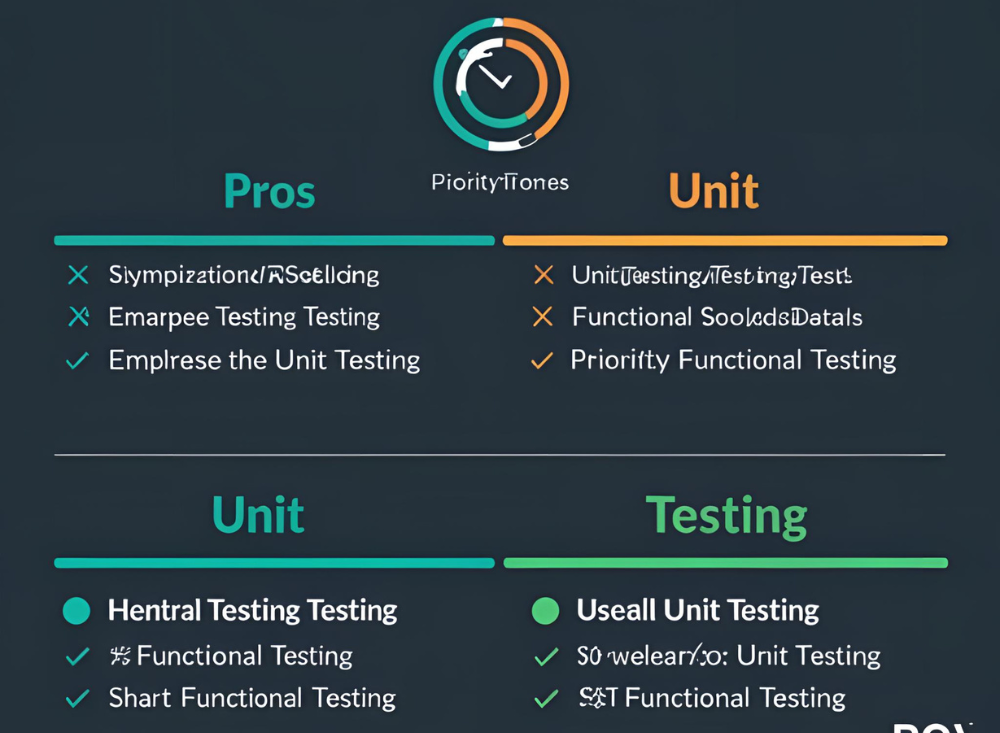
Introduction
In the world of software development, testing is a critical phase that ensures the quality, reliability, and performance of the final product. Two of the most commonly discussed testing methodologies are Functional Testing and Unit Testing. While both aim to identify defects and ensure the software works as intended, they differ in scope, approach, and purpose. This article explores the pros, cons, and prioritization of these two testing methods to help you understand their roles in the software development lifecycle.
Functional Testing
Functional Testing is a type of black-box testing that focuses on verifying the functionality of the software against the specified requirements. It evaluates the system as a whole or its individual components to ensure they behave as expected from the end-user’s perspective.
Pros of Functional Testing
- End-User Perspective: Functional testing simulates real-world usage, ensuring the software meets user expectations and business requirements.
- Comprehensive Coverage: It tests the entire application, including integrations between modules, ensuring the system works cohesively.
- Identifies Critical Issues: Functional testing can uncover major flaws in the system’s behavior, such as broken workflows or incorrect outputs.
- Validation of Requirements: It ensures that the software aligns with the functional specifications and business goals.
Cons of Functional Testing
- Time-Consuming: Testing the entire system or large components can be time-intensive, especially for complex applications.
- Limited Scope for Early Detection: Functional testing is typically performed later in the development cycle, making it harder to catch issues early.
- Dependency on Test Data: It requires realistic test data, which can be challenging to create and maintain.
- Higher Cost: Due to its comprehensive nature, functional testing can be more expensive to implement and execute.
Unit Testing
Unit Testing is a type of white-box testing that focuses on verifying the smallest testable parts of the software, such as individual functions, methods, or classes. It is typically performed by developers during the coding phase.
Pros of Unit Testing
- Early Detection of Defects: Unit testing identifies issues at the earliest stage of development, reducing the cost and effort of fixing them later.
- Isolation of Issues: By testing individual components in isolation, unit testing makes it easier to pinpoint the root cause of problems.
- Improved Code Quality: It encourages developers to write modular, maintainable, and reusable code.
- Faster Feedback Loop: Unit tests are quick to execute, providing immediate feedback to developers.
- Supports Refactoring: With a robust suite of unit tests, developers can refactor code with confidence, knowing that any regressions will be caught.
Cons of Unit Testing
- Limited Scope: Unit testing only verifies individual components and does not test the system as a whole or interactions between modules.
- Requires Developer Expertise: Writing effective unit tests requires a deep understanding of the code and testing principles.
- Time-Intensive for Initial Setup: Creating a comprehensive suite of unit tests can be time-consuming, especially for legacy systems.
- False Sense of Security: Passing unit tests do not guarantee the system will work correctly in real-world scenarios.
Functional Testing vs Unit Testing
While both functional and unit testing are essential, they serve different purposes and are used at different stages of the development lifecycle. Here’s a comparison:
| Aspect | Functional Testing | Unit Testing |
|---|---|---|
| Scope | Tests the entire system or large components. | Tests individual functions or methods. |
| Focus | Verifies functionality from the user’s perspective. | Verifies the correctness of code logic. |
| Timing | Performed after integration or system testing. | Performed during the development phase. |
| Execution | Typically manual or automated by QA teams. | Usually automated by developers. |
| Dependencies | Requires a fully integrated system. | Requires no dependencies on other modules. |
| Cost | Higher due to comprehensive coverage. | Lower due to focused scope. |
Functional Testing vs Unit Testing: Which to Choose?
The choice between functional and unit testing depends on the stage of development, the complexity of the project, and the specific goals of the testing process. Here’s how to prioritize:
- Early Development Phase: Prioritize unit testing to catch defects early and ensure the foundational code is robust.
- Integration and System Testing: Shift focus to functional testing to validate the system’s behavior and ensure it meets user requirements.
- Complex Systems: Use a combination of both. Unit testing ensures individual components work correctly, while functional testing verifies the system as a whole.
- Resource Constraints: If resources are limited, prioritize unit testing for critical components and functional testing for high-risk areas.
In most cases, a balanced approach that incorporates both unit and functional testing is ideal. Unit testing provides a safety net for developers, while functional testing ensures the software delivers value to end-users.
Conclusion
Both Functional Testing and Unit Testing play vital roles in ensuring software quality, but they serve different purposes and are used at different stages of development. Unit testing is essential for catching defects early and maintaining code quality, while functional testing validates the system’s behavior from the user’s perspective. By understanding the pros, cons, and appropriate use cases for each, development teams can prioritize effectively and deliver high-quality software that meets both technical and business requirements. A well-rounded testing strategy that leverages the strengths of both methodologies is key to achieving success in software development.